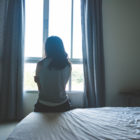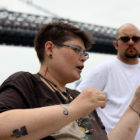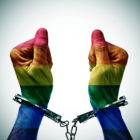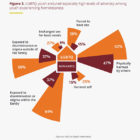
LGBTQ, Traumatized Homeless Youth More Vulnerable to Being Trafficked, Report Finds
|
Understanding how homeless youth are trafficked is important information for the organizations offering them services.
Juvenile Justice Information Exchange (https://jjie.org/tag/lgbtq/page/2/)

Understanding how homeless youth are trafficked is important information for the organizations offering them services.

The New York City bureau for the Center for Sustainable Journalism has extensively reported on queer homeless youth.

The first time Christina Vengerovsky met Layleen Cubilette-Polanco was on Christopher Street in the summer of 2010. Her friends had been talking about a girl in a yellow dress, saying there was no way that girl was trans.

What does “justice” look like for young people experiencing homelessness in the United States? As one of the wealthiest nations in the world, it is troubling to consider the numerous ways that we, as a society, fail youth and young adults in securing one of the most basic needs: shelter.

Matthew “Fire” Mishefski’s experience with homelessness is the last of three stories on LGBTQ homeless youth as reported by the JJIE’s New York City Bureau. He uses the pronouns he/him.

Ael Ericha Loetterle’s experience with homelessness is the second of three stories on queer homeless youth as reported by the JJIE’s New York City Bureau. She goes by female pronouns she/her.

Faith Alastair’s experience with homelessness is the first of three stories on LGBTQ homeless youth as reported by the JJIE’s New York City Bureau. They use gender-neutral pronouns.

Medical sociologist Eric Wright’s work has taken him into parks, abandoned buildings, shelters and other places off the beaten path.

Over the last couple of years, laws have been established to protect LGBTQ youth. Those laws should be upheld inside and outside any facility. It’s not a conversation that many people have, which is the reason I decided to write this. I chose to organize my thoughts in a Q&A format. My fellow Youth Council member, Aazia-Marie Ross, developed the questions.

Lesbian, gay, transgender, bisexual and queer youths have nearly double the risk of winding up homeless as their straight peers — and they’re twice as likely to die on the streets once they get there, a new study finds.